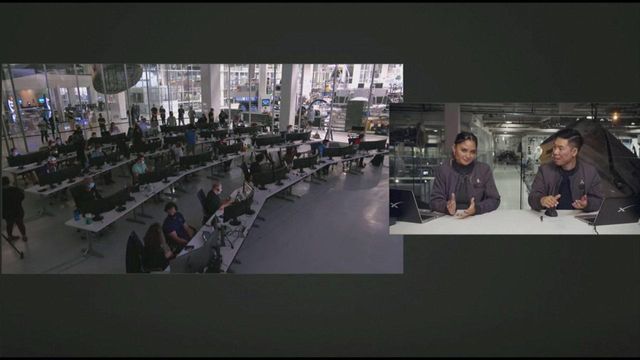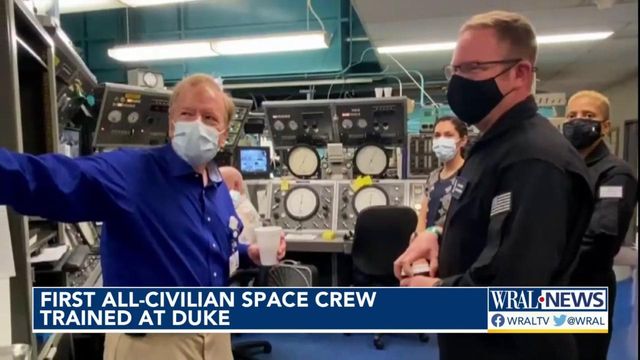Splashdown set for Inspiration 4 crew
Splashdown is scheduled for 7:06 pm at a spot off the Florida coast not far from where the mission lifted off on Thursday.
Posted — UpdatedThe crew of the Inspiration 4 mission, the first private space mission with all non-professional astronauts, is set to come to an end Saturday night after a three-day mission that took them further from Earth than their professional counterparts aboard the International Space Station (ISS).
Their trip home will be similar to previous Crew Dragon missions returning from the ISS. Getting back from space is actually pretty simple — slow down and let gravity take over.
Splashdown is scheduled for 7:06 pm at a spot off the Florida coast not far from where the mission lifted off on Thursday.
Weather and sea conditions at these sites are monitored. The location which best meets conditions for safe recovery is selected.
Landing Site Criteria
- Wind less than 10.25 mph (16.5 km/hr, about 9 knots)
- The cloud ceiling must be above 150 m
- There must be more than half-a-mile (0.8 km) of visibility at day (1 mile for night landings)
- Less than a 25% probability of rain
- 25% probability of lighting within the landing area
Conditions continue to be monitored before onboard computers begin the process of de-orbiting. Conditions, especially at the primary site, continue to be monitored. Should any of the following not be met, one of the back-up landing sites can be selected:
- No lightning within about 10 miles (16 km) of the area
- No more than 4 degrees of pitch or roll on the recovery vessel
Steps along the path home
Around 5 p.m. on Saturday, the capsule will fire its 16 Draco thrusters in short bursts, combining fuel, monomethylhydrazine (MMH), and oxidizer, dinitrogen tetroxide (NTO) in a de-orbit burn. These are hypergolic propellants that ignite when combined together, even in the vacuum of space. This slows the capsule from the ~17,500 mph that has kept it in orbit over since launch three days ago.
Over the next 30 minutes, earth's gravity takes over, slowing the capsule as it pulls closer. The capsule will then it will reorient itself for re-entry as it begins to encounter more atmosphere.
Many astronauts describe the next 12 minutes as the wildest ride of the journey as they crew really begins to feel the effects of gravity again. They'll see fiery plasma streaking outside as friction from the atmosphere does most of the work slowing the capsule's descent.
About four minutes before splashdown, still moving about 350 mph and more than three miles up, a pair of small parachutes will deploy. Their sole job is to pull out the set of main parachutes a minute later and a little more than a mile above the ocean.
Recovery teams will first reach the spacecraft with small boats, attach lines, then the recovery vessel will winch the capsule closer. The capsule, with crew still aboard, will be lifted onto the back of the ship by a specially designed A-frame. Following a series of safety checks, mostly looking for highly corrosive and toxic residue from those hypergolic fuels mentioned above, the hatch will be opened and the crew led out where they'll undergo initial medical checks.
You can watch the return of the Inspiration 4 mission on SpaceX's live stream.
Related Topics
• Credits
Copyright 2024 by Capitol Broadcasting Company. All rights reserved. This material may not be published, broadcast, rewritten or redistributed.






